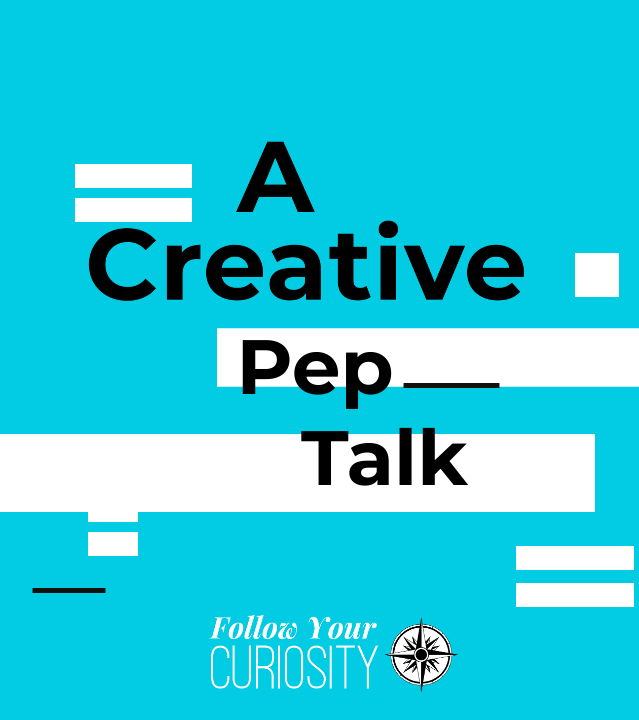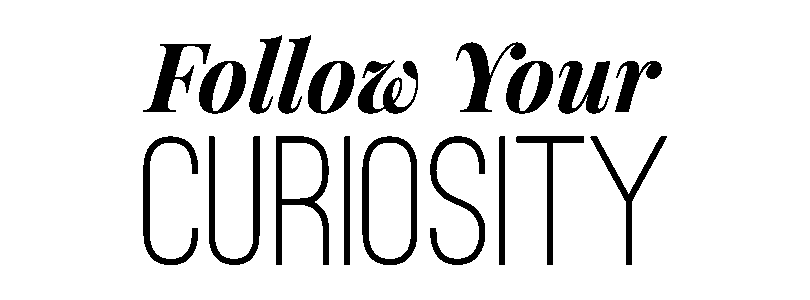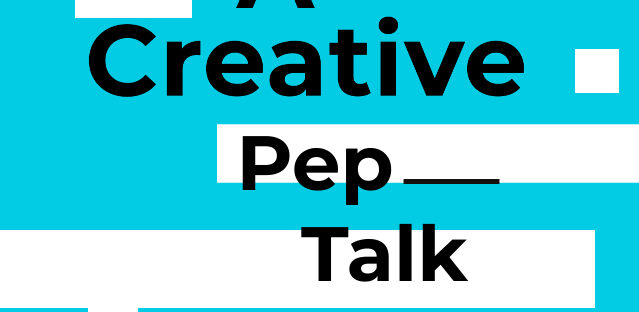
What happens when you make bad art? Sometimes you get really good art by accident! Here’s a real-life story of a time when that happened to Doctor Who writer Steven Moffat, and why you should consider Making Bad Art yourself.
Source for this story.
Want to come Make Bad Art of your own, and lose perfectionism and harsh self-judgment in the process? Join us starting November 4, 2024!
Want more tips? Check out this playlist with all my previous Creative Pep Talks!
Could you leave a review? It’s really easy, and it helps SO much. Thanks!
Join my free creative community, The Spark! We celebrate each other’s creative courage, and I’ll be sharing programs for subscribers and listeners there in the coming months.
Get in Touch
I’d love to hear your feedback, questions, and experience with these ideas! Send me a note at fycuriosity.com, or contact me on Facebook, Instagram, or Twitter.
Subscribe!
You can subscribe to Follow Your Curiosity via the handy links at the top of the page for Apple Podcasts, Spotify, iHeart Radio, TuneIn, and YouTube. If you enjoyed the episode, don’t forget to tell your friends!

Transcript: The Magic of Making Bad Art
Please note: This is an unedited transcript, provided as a courtesy, and reflects the actual conversation as closely as possible. Please forgive any typographical or grammatical errors.
Nancy Norbeck [00:00:06]:
Welcome to Follow Your Furiosity. Ordinary people, extraordinary creativity. Here’s how to get unstuck. I’m your host, creativity coach, Nancy Norbeck. Let’s go. Hey, everybody. This is Nancy Norbeck with this week’s Creative Pep Talk. Now if you’ve been listening for a while, you know that I’m a big Doctor Who fan, and I wanna tell you a story this week about the origin story of one of my favorite episodes.
Nancy Norbeck [00:00:32]:
So in the third season of the revived series, there is an episode called “Blink.” And, apparently, when writer Steven Moffat set out to write this story, he was originally told that this was gonna be a huge blockbuster episode, lots of special effects, huge budget. He could basically do whatever he wanted. And then at the last minute, he found out that, oh, no. No. No. No. Sorry.
Nancy Norbeck [00:00:55]:
Budget’s been slashed. No special effects. Oh, and, also, your two leads are barely gonna be in it. Sorry. Have fun. You can imagine this was not what he wanted to hear. And so apparently, he was left at the very last minute writing this episode in 45 minutes in the back of a cab. And basically, he said to himself, well, everybody’s gonna hate this because the Doctor’s not even gonna be in it.
Nancy Norbeck [00:01:20]:
And so I don’t know. I’m just making stuff up. And that’s what he did. He made stuff up and expected that everyone was gonna hate it, and it was gonna be terrible. And since then, it has actually turned out to be a classic Doctor Who episode. It is one of the most highly regarded of the new series and probably ever, and everyone loves it. And he has decided that this is a sign that less is more, and he’s adopted a more bare bones approach since then, supposedly. I don’t know.
Nancy Norbeck [00:01:54]:
You could argue that that’s not that’s a different conversation for a different day. And there’s merit to that. Absolutely. But that’s not why I’m telling you this story. I’m telling you this story because I suspect that the reason that this episode is so good is because Steven Moffat lowered his expectations because he didn’t have a choice, and it pretty much deliberately sat down and made bad art because he had to. He had nothing to go on. Everything that he had been told was taken from him. His stars were taken from him.
Nancy Norbeck [00:02:31]:
The two most important characters in any Doctor Who episode were basically taken from him. And, literally, his thought was everyone’s going to hate this because the Doctor’s not even gonna be in it. So what was he gonna do? So he just wrote anything, and that’s basically what happens when you make bad art. You sit down and you just write any darn thing at all. It’s no surprise to me that what came out of that process of saying, well, whatever, actually turned out to be good art. Because when we lower our expectations and have no intention of writing something good, our inner critic gets out of our way. We stop judging ourselves. Our our sense of play comes out because there’s no there’s nowhere to go except what the heck, might as well have fun with this because it’s all ridiculous anyway.
Nancy Norbeck [00:03:27]:
And that’s where the good stuff tends to come from. We don’t think that way because we’ve been trained to believe that we have to aim high and, you know, quality is the best policy and all of these things. Anything worth doing is worth doing well. Well, it’s also true that anything worth doing is worth doing badly. Because when we let ourselves do it badly, great things can happen. It’s just counterintuitive because we’ve been told that it’s counterintuitive. This is why my course Make Bad Art exists. It exists to help you get out of your own head because the more time we spend in our own heads, the harder it is to make good art.
Nancy Norbeck [00:04:08]:
And the good art cannot come if we’re not willing to let the bad art out with it. The more we judge what we’re creating, the harder it is for the good art to come out. And the harder it is for us to do anything because when we’re judging ourselves, seriously, when have you ever accomplished much of anything with any kind of ease or frankly, good quality when you’ve been busy judging yourself all the time? And I’ll bet you even if you have created good quality under those circumstances, you haven’t recognized it because you’ve been so busy judging yourself for it. It’s so much easier to create good art when you get out of your own way and you stop judging yourself and you have compassion for yourself and you play. And it’s so much easier to just be in this world under those circumstances too. And that’s what I wanna bring to you through make bad art. That’s the whole point of it. It’s kind of a multifaceted thing.
Nancy Norbeck [00:05:04]:
I was asked recently, you know, what comes first in Make Bad Art? Is it the shift in your mindset and how you view these things or is it the bad art? Well, yes, it’s both. They happen at the same time. It’s all part of the process, and the process is the key. So I hope that you’ll think about this story. Steven Moffat did not deliberately make bad art. But either way, look what happened. He’s got a critically acclaimed, amazing episode, which, by the way, stands well on its own. So if you’re not a Doctor Who fan, it’s great for the Halloween time of year or whenever you happen to be listening to this episode.
Nancy Norbeck [00:05:42]:
So go out and find it. He’s got an amazing episode because he sat down and he made bad art. What might happen for you? Hope you’ll think about it. We start on November 4, 2024. And if you’re listening to this later, I have every intention of continuing to offer this program, so I hope you’ll check it out. So with that, either way, go make some bad art. Have fun with it, and I’ll see you next time. If this episode resonated with you, or if you’re feeling a little bit less than confident in your creative process right now, join me at the spark on Substack as we form a community that supports and celebrates each other’s creative courage.
Nancy Norbeck [00:06:22]:
It’s free, and it’s also where I’ll be adding programs for subscribers and listeners. The link is in your podcast app, so sign up today. See you there, and see you next week. Follow Your Curiosity is produced by me, Nancy Norbeck, with music by Joseph McDade. If you like Follow Your Curiosity, please subscribe, rate, and review on Apple Podcasts or wherever you get your podcasts. And don’t forget to tell your friends. It really helps me reach new listeners.

